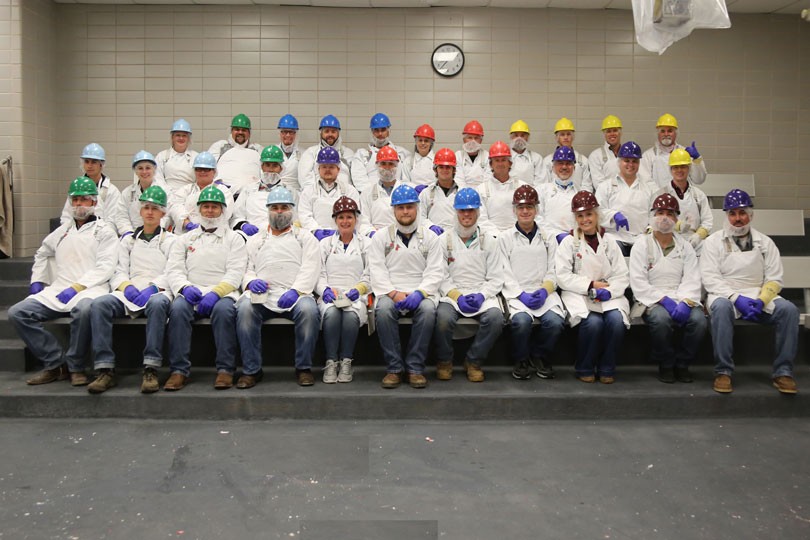By Julie Tomascik
Editor
Texas cattlemen and women have a legacy to uphold, a brand to be proud of and a product with exceptional quality. But raising the steaks for consumers across the nation requires a desire to build upon success.
Nearly 40 Texas Farm Bureau (TFB) young farmer and rancher members were able to do just that by growing their knowledge and understanding of the beef industry through a recent Beef 706 course held last month.
“Beef 706 is for producers to help them better understand the food side of their industry,” Dr. Dan Hale, Texas A&M University professor and Extension meat specialist, said. “Cattlemen do a great job of raising cattle. But a lot of times they sell those animals, and they don’t have any idea what happens to them after they leave the ranch or leave the feedyard. So this gives them a better idea of where value continues to go as the animal leaves as a feeder calf or then a finish steer if they get out of the feedyard.”
The hands-on activities were a prime experience for TFB members to learn more about beef quality, genetic influences, cattle handling and marketing opportunities.
Classroom sessions included an introduction to the U.S. carcass grading system and how it impacts the value of beef cattle. Participants reviewed the U.S. standards for carcass quality grades, how to visually determine live estimates for quality and yield and calculated scores from harvested cattle.
But it wasn’t all classroom discussion. The group viewed two live head of cattle to predict quality and yield grades.
Industry experts described handling procedures and gave insight on how moving cattle in a low stress manner can directly affect beef quality.
Beef carcass value, however, is influenced by a variety of factors.
The program demonstrated this when Beef 706 participants were divided into groups that selected a slaughter-ready calf from a video prepared before harvest. They “purchased” it according to current fed cattle prices after considering visual indicators for carcass quality, breed characteristics and weight.
They followed their calf through a grading and hands-on cutting session. The groups had one-on-one carcass fabrication lessons with meat science instructors as they processed a side of beef from primal sections to retail cuts.
This allowed participants to experience first-hand the differences in carcass composition and how those measurements affect value.
“This class allowed me to learn more about the beef industry,” Logan Farmer, a Texas A&M University student, said. “We went to the lab and fabricated a carcass. We dove into yield grades and quality grades. It was an experience that allowed me to expand my knowledge of this industry.”
Farmer is from Lorena, where he and his family run stocker and feeder calves. As a student at Texas A&M, Farmer is studying Agricultural Economics and Meat Science.
“This experience was enlightening. We got to work with meat specialists, talk with other ranchers, work in a lab, and we did it all in a span of two days,” he said.
The producer-education program builds on Texas ranchers’ understanding of raising cattle by providing knowledge on how to increase beef quality and consistency.
“I grew up in agriculture, and I didn’t realize how much went into the steak that you buy at the grocery store,” Raley Kirk, a Texas A&M student, said. “This class started us at the beginning with live cattle and took us all the way through to the end to the steak. I learned so much about all the different aspects of our industry. It was truly a great program.”
Kirk and her family have a small cow-calf operation in San Saba. She said the information from Beef 706 can be applied to any operation—large or small.
“I think anyone can apply this information to their operation,” Kirk, who’s majoring in Agricultural Economics at Texas A&M, said. “From genetics to animal handling with pen design and knowing more about your product and the demand for it—all of that can help you better yourself and your operation. I know I learned stuff I can take back home.”
Beef raised across the Lone Star State makes its way to kitchen tables, restaurants, the meat counter in grocery stores and more all over the globe.
The program covered genetic selection programs and tools, factors that impact marbling and br


i was there and this is very informative if you like this type of education . one of the best i have ever been to